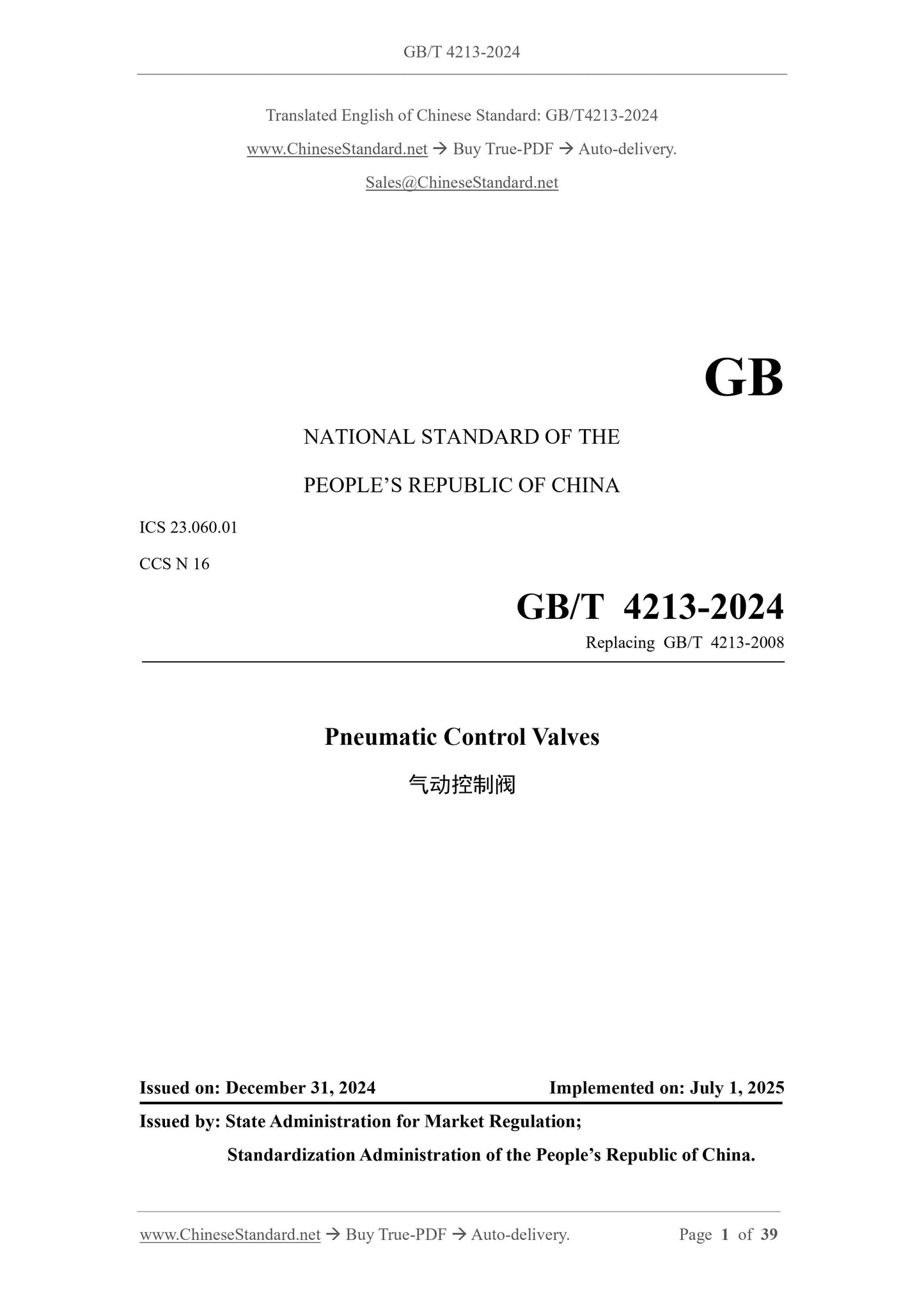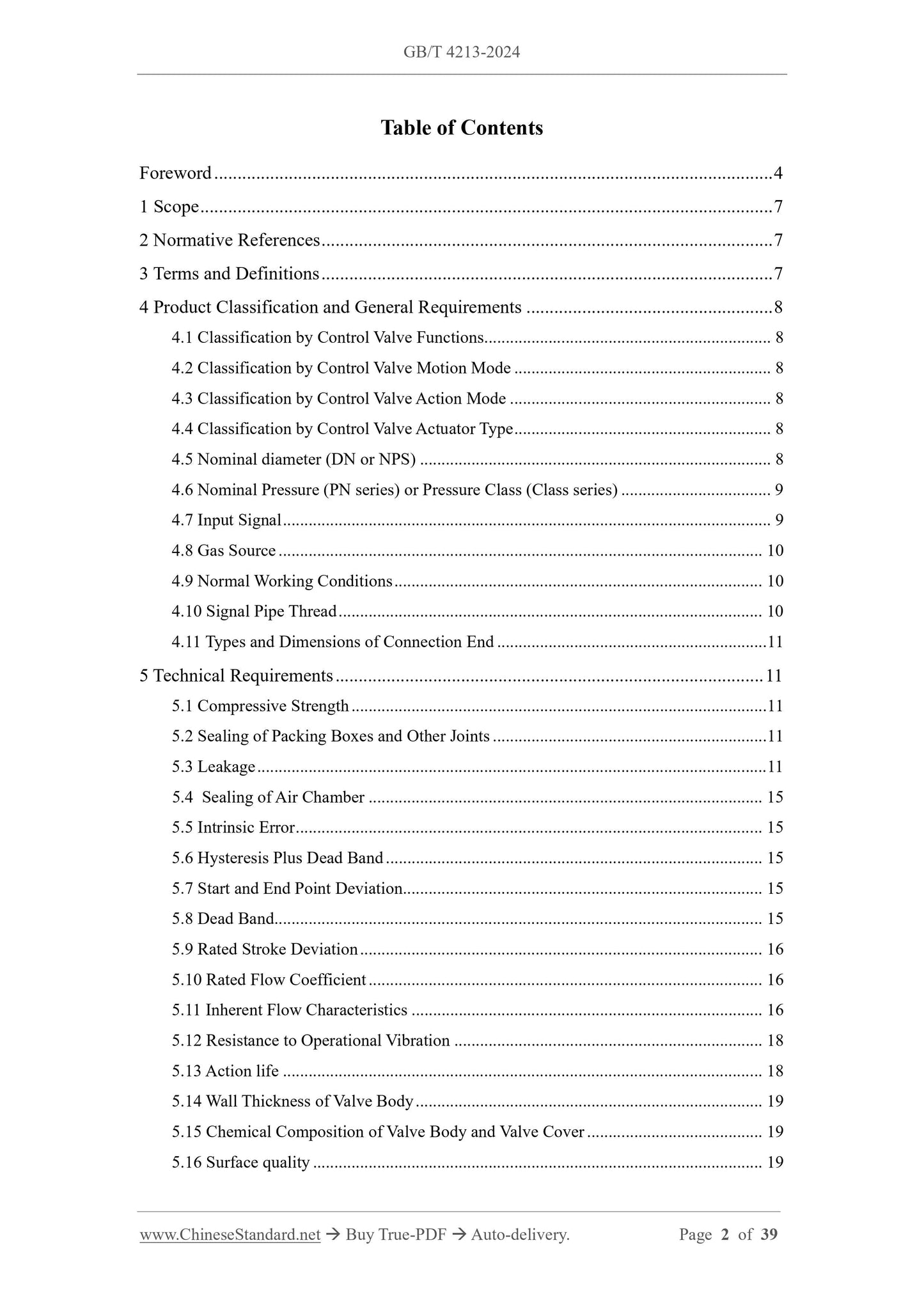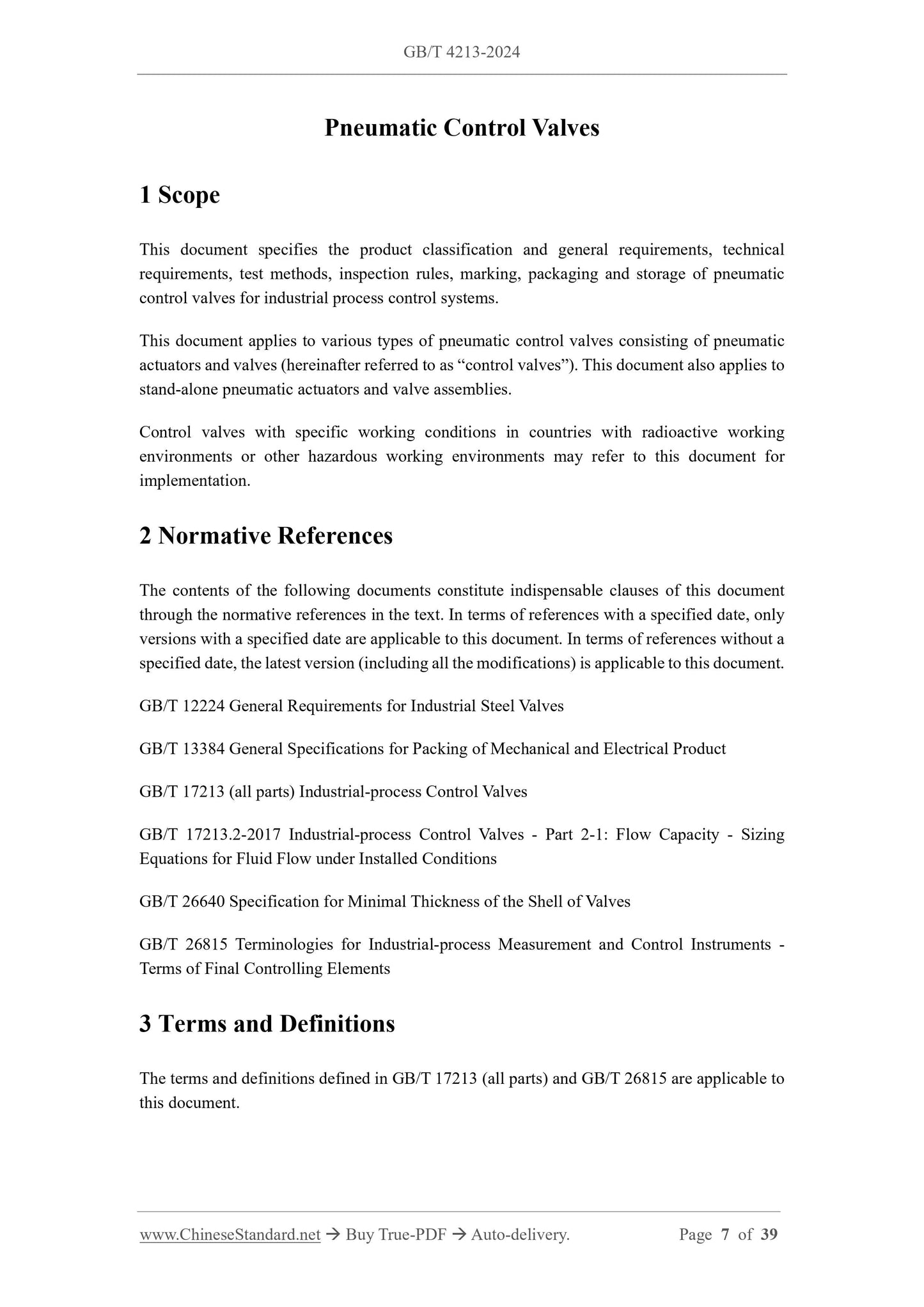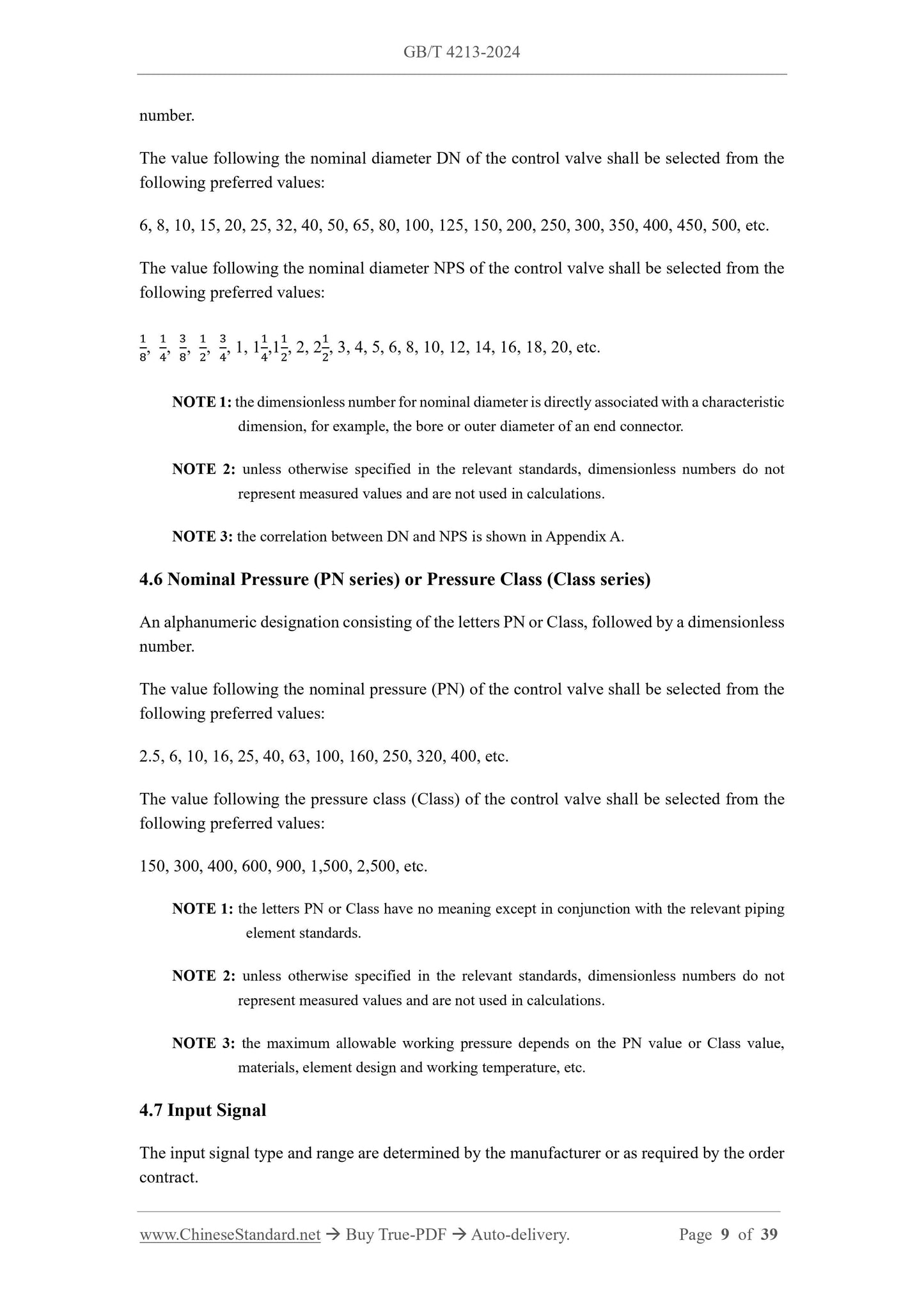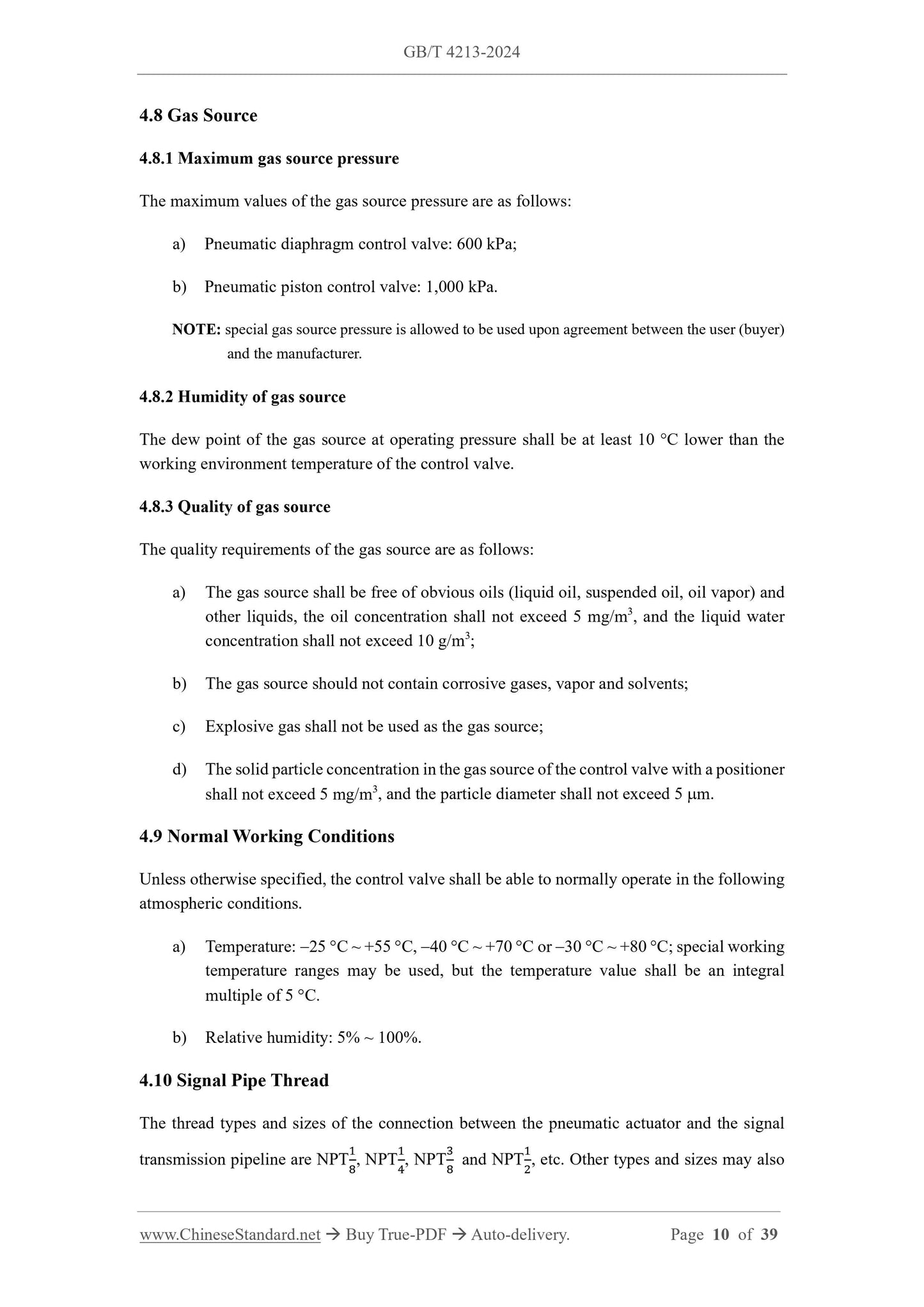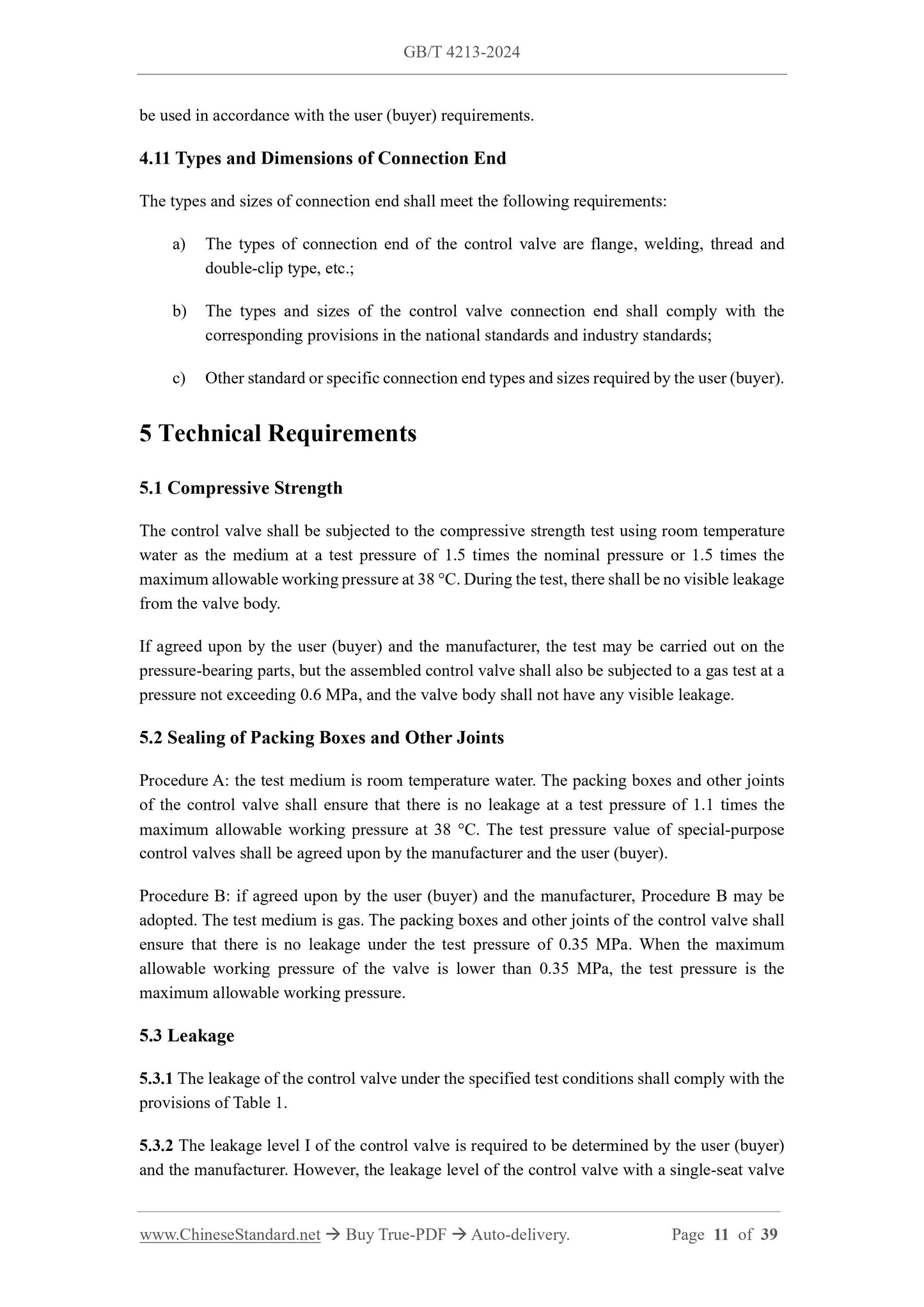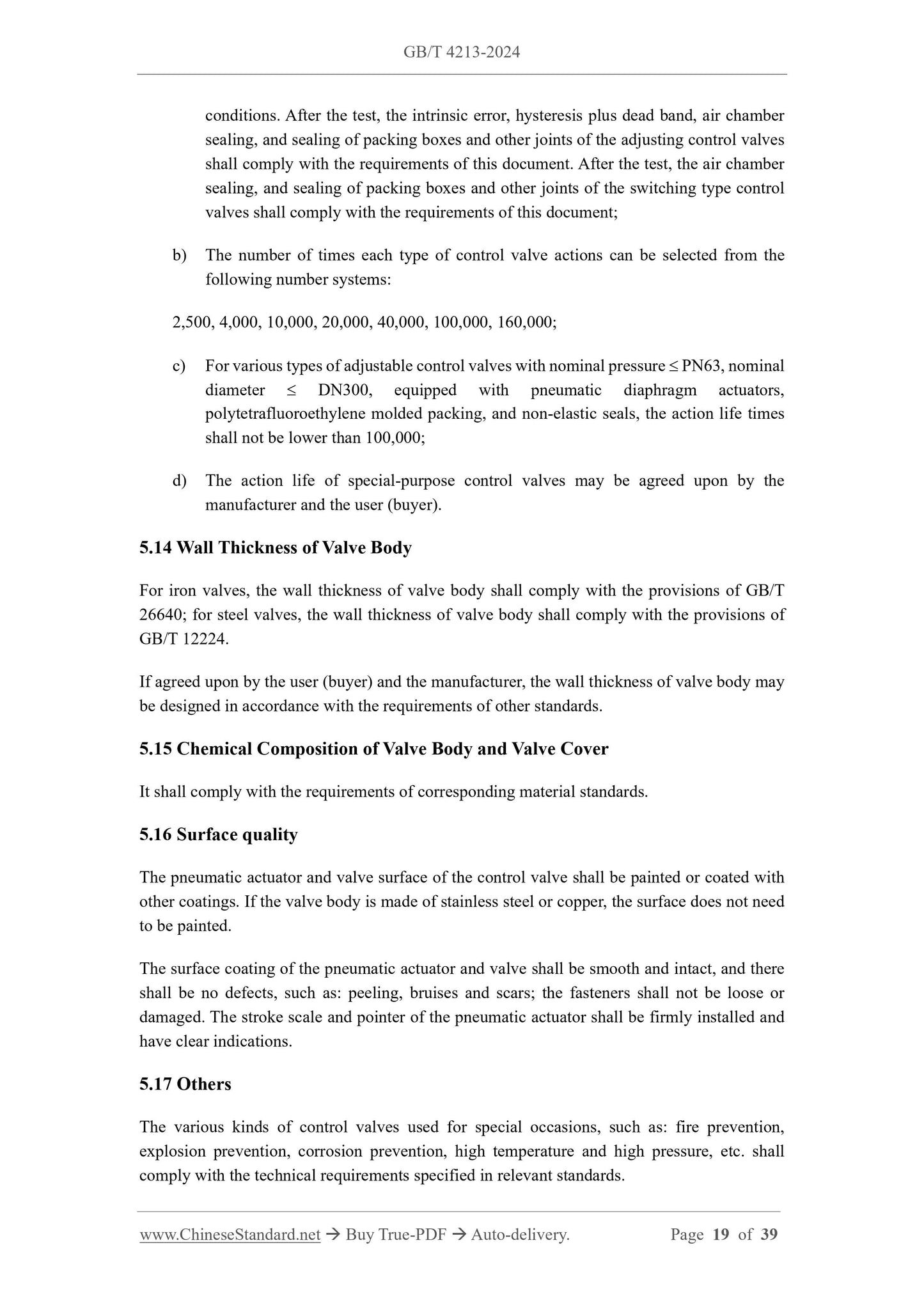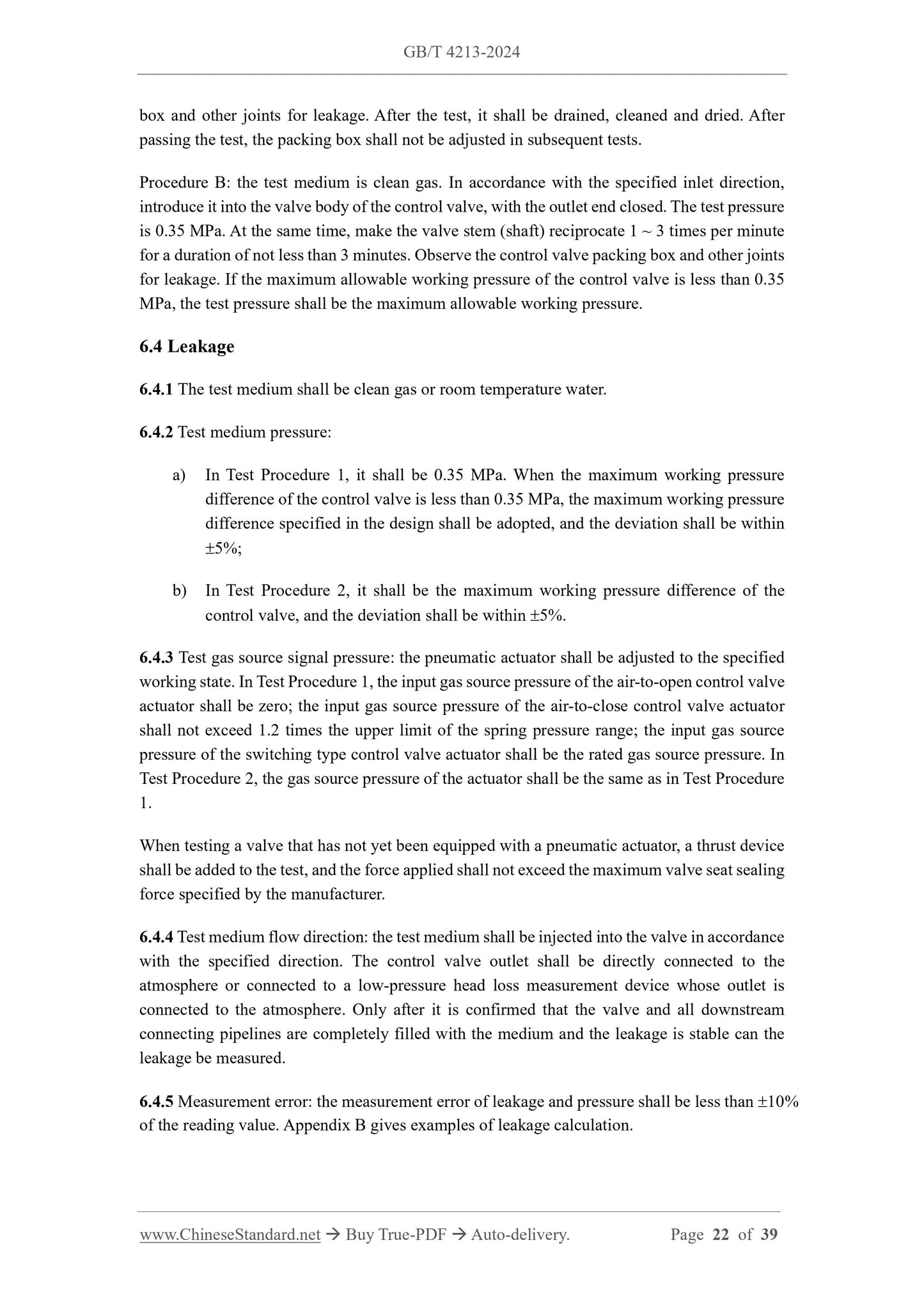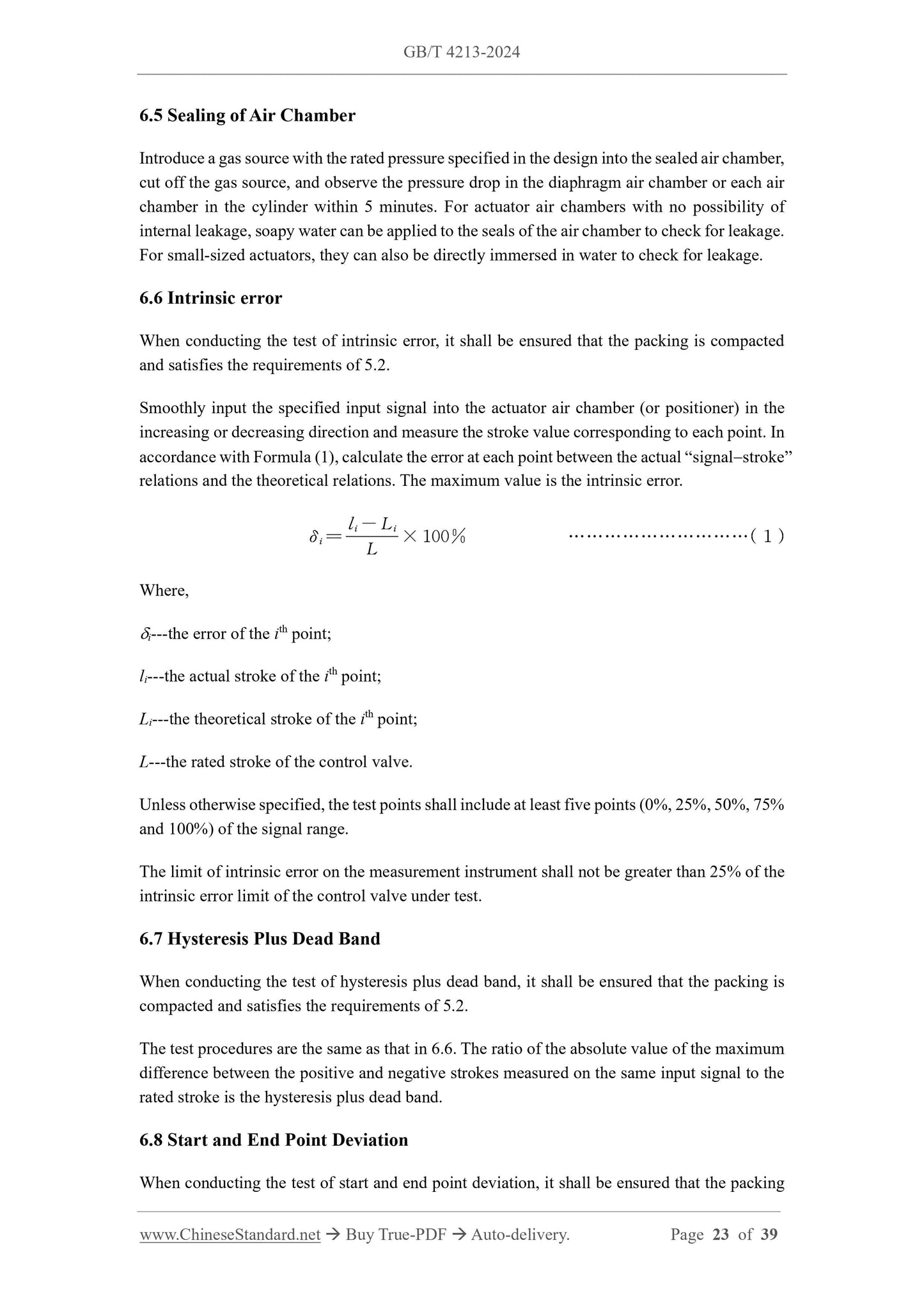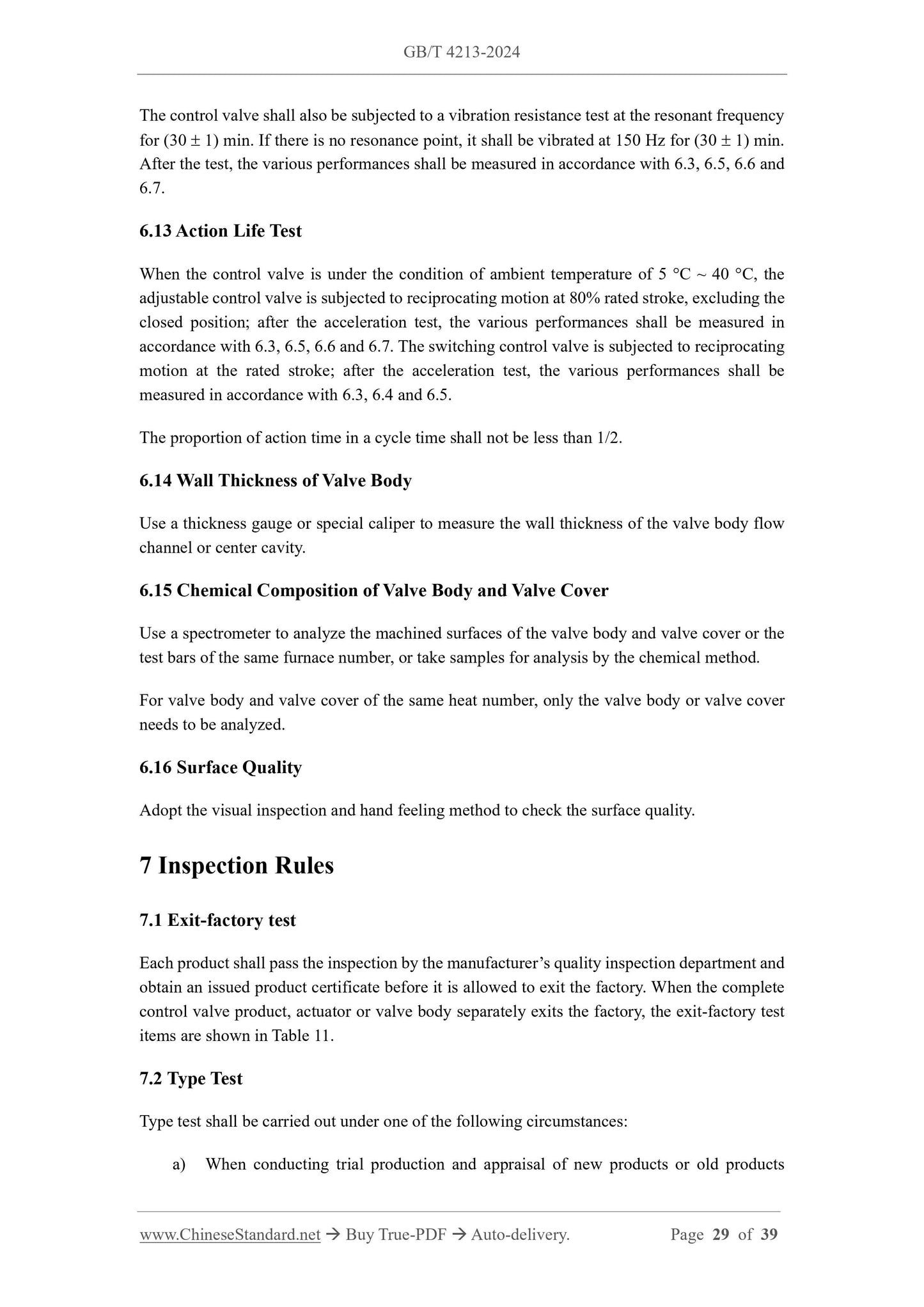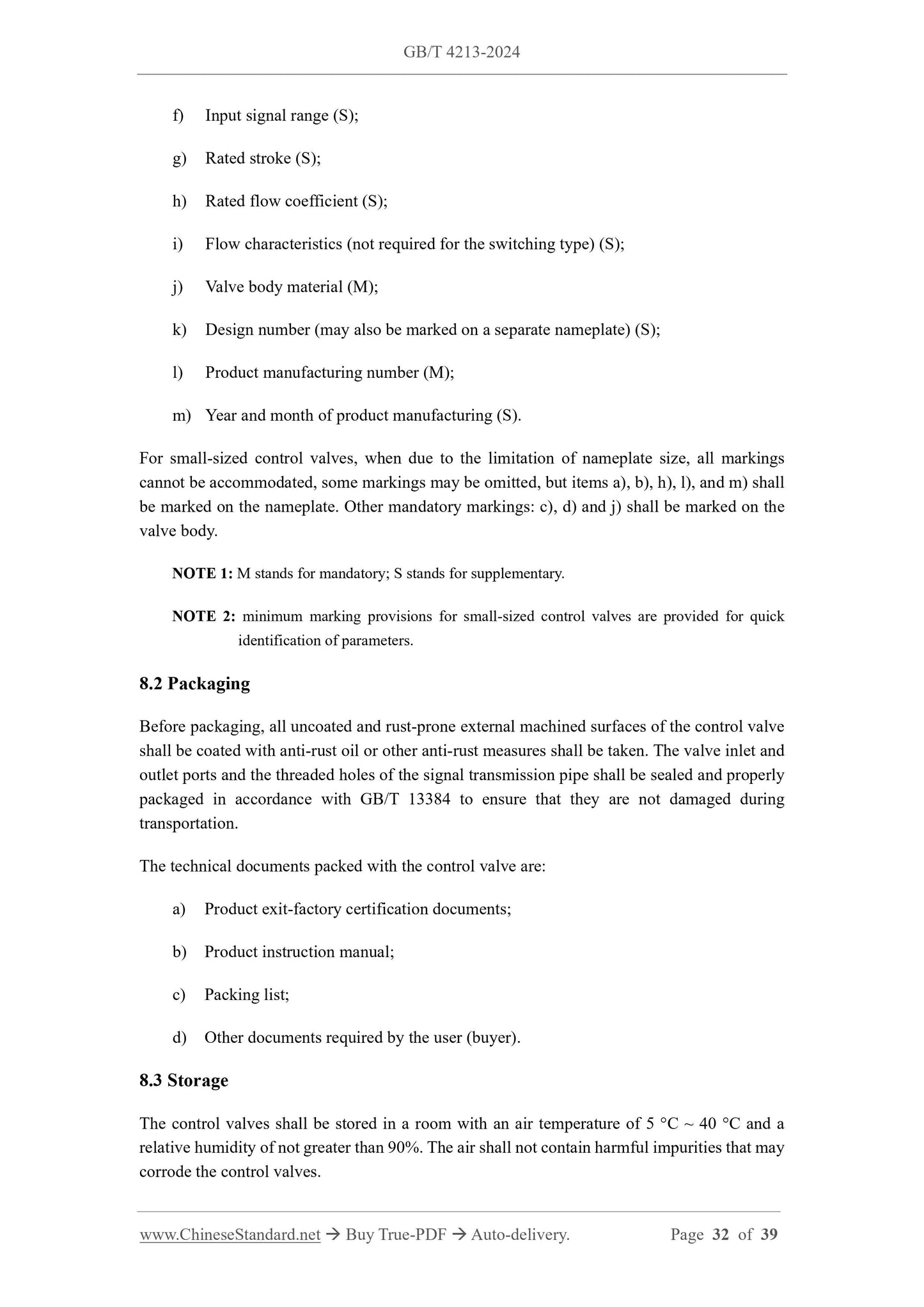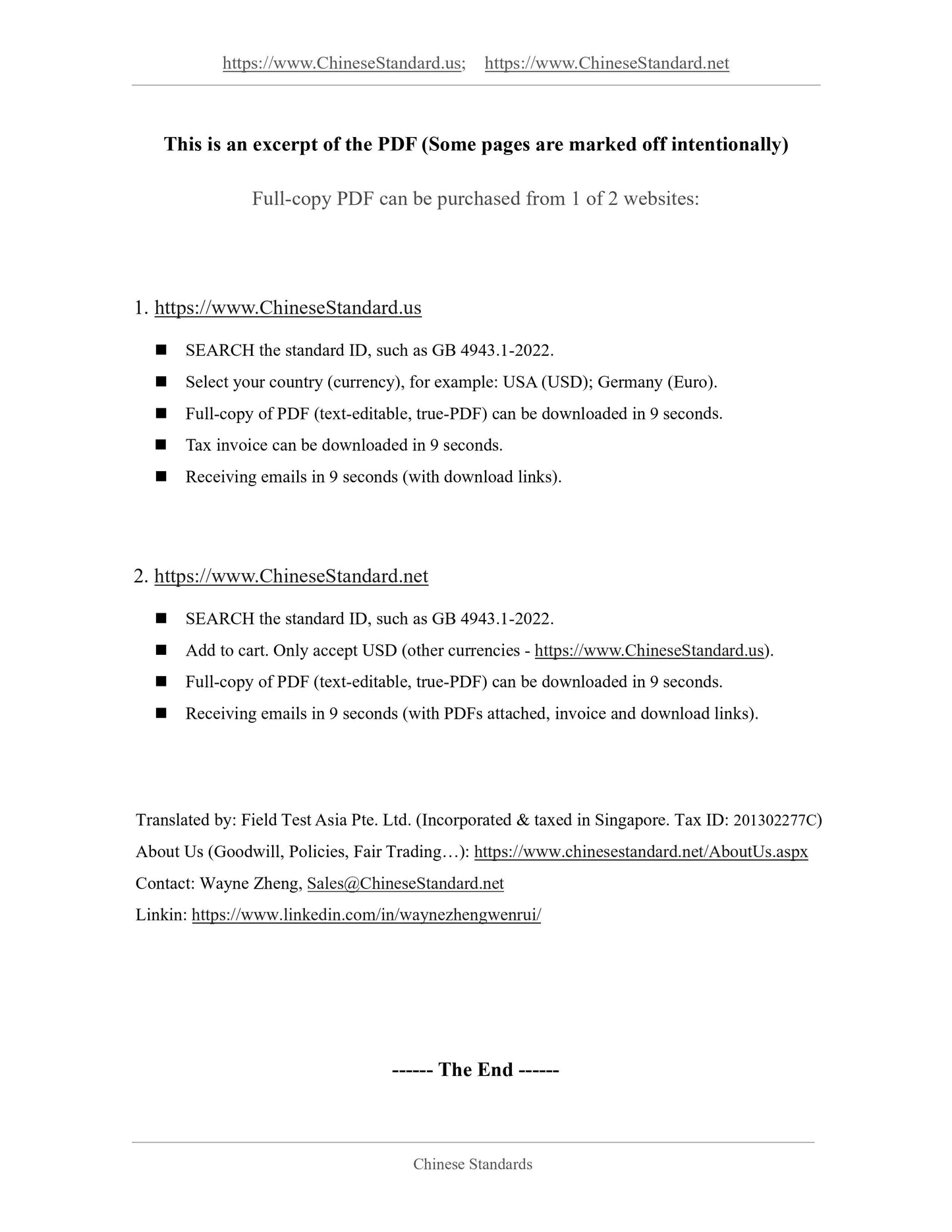1
/
of
12
www.ChineseStandard.us -- Field Test Asia Pte. Ltd.
GB/T 4213-2024 English PDF (GB/T4213-2024)
GB/T 4213-2024 English PDF (GB/T4213-2024)
Regular price
$515.00
Regular price
Sale price
$515.00
Unit price
/
per
Shipping calculated at checkout.
Couldn't load pickup availability
GB/T 4213-2024: Pneumatic control valves
Delivery: 9 seconds. Download (and Email) true-PDF + Invoice.Get Quotation: Click GB/T 4213-2024 (Self-service in 1-minute)
Newer / historical versions: GB/T 4213-2024
Preview True-PDF
Scope
This document specifies the product classification and general requirements, technicalrequirements, test methods, inspection rules, marking, packaging and storage of pneumatic
control valves for industrial process control systems.
This document applies to various types of pneumatic control valves consisting of pneumatic
actuators and valves (hereinafter referred to as “control valves”). This document also applies to
stand-alone pneumatic actuators and valve assemblies.
Control valves with specific working conditions in countries with radioactive working
environments or other hazardous working environments may refer to this document for
implementation.
Basic Data
| Standard ID | GB/T 4213-2024 (GB/T4213-2024) |
| Description (Translated English) | Pneumatic control valves |
| Sector / Industry | National Standard (Recommended) |
| Classification of Chinese Standard | N16 |
| Classification of International Standard | 23.060.01 |
| Word Count Estimation | 30,333 |
| Date of Issue | 2024-12-31 |
| Date of Implementation | 2025-07-01 |
| Older Standard (superseded by this standard) | GB/T 4213-2008 |
| Issuing agency(ies) | State Administration for Market Regulation, China National Standardization Administration |
Share
